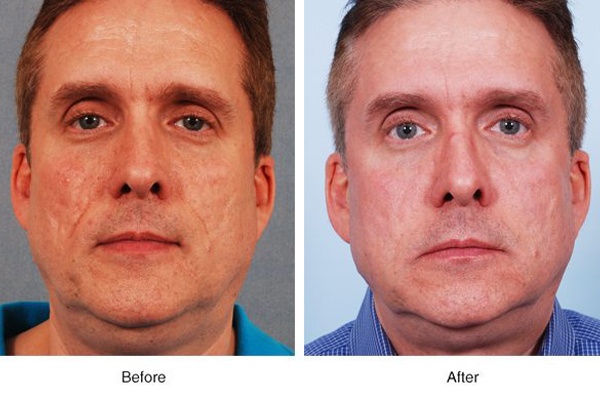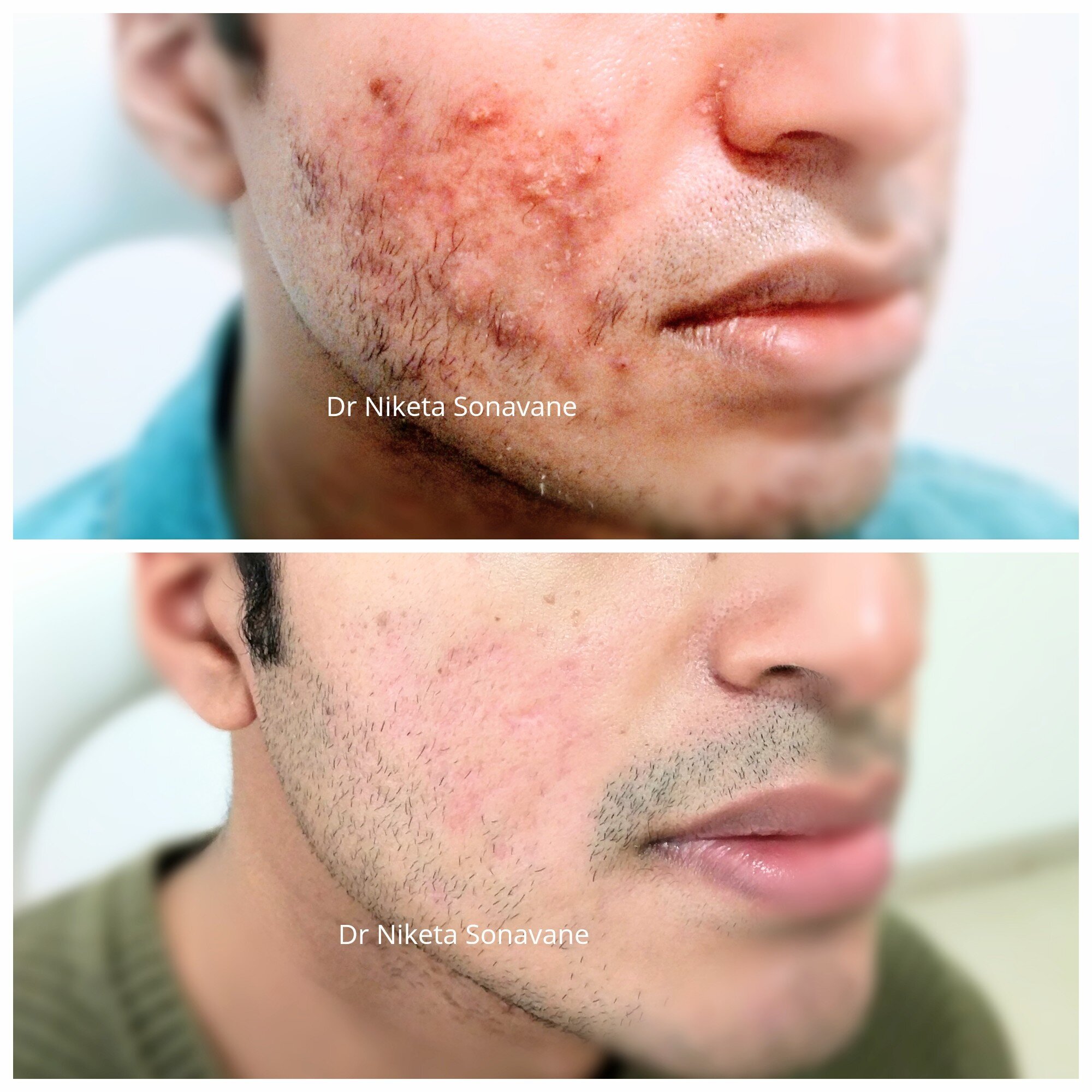Acne and Acne Scars Treatment: Professional Solutions for Lasting Results
Acne and Acne Scars Treatment: Professional Solutions for Lasting Results
Blog Article
Checking Out Skin Conditions: Dealing With and identifying Acne Scars for Healthier Skin
Acne marks stand for a considerable worry for individuals looking for to preserve healthy and balanced skin, as they can impact both appearance and self-esteem. Comprehending the different kinds of scars, from atrophic to hypertrophic, is necessary for establishing proper treatment alternatives.
Recognizing Acne Scars

The body's natural recovery process can lead to either atrophic scars, which look like clinical depressions in the skin, or hypertrophic marks, which are elevated and arise from overproduction of collagen. Additionally, the mental toll of acne marks need to not be undervalued; many people report sensations of humiliation, stress and anxiety, and lowered self-esteem. This emotional burden can affect social interactions and total quality of life.
Dealing with acne scars calls for a detailed understanding of their formation and impact. Understanding of the possibility for lasting effects connected with neglected marks can encourage people to seek proper therapies. Early treatment and efficient administration strategies can dramatically improve skin appearance and enhance mental durability, highlighting the value of comprehending the intricacies surrounding acne marks.
Kinds of Acne Marks
Acne scars can be classified into distinctive kinds, each exhibiting special characteristics and needing certain treatment strategies. acne treatment for sensitive skin. The primary sorts of acne marks consist of atrophic, hypertrophic, and keloid marks

Hypertrophic scars, in contrast, are elevated over the skin level and are the result of too much collagen production throughout the healing process. They commonly continue to be within the limits of the initial acne sore. Keloid marks are similar yet expand past the original injury site, forming larger, raised areas that can be itchy or painful.
Recognizing these kinds of marks is essential for choosing ideal therapy options. Various scars might respond much better to certain treatments, such as laser treatments, fillers, or surgical treatments, emphasizing the value of a tailored approach to acne scar monitoring.
Identifying Your Scars
When assessing the look of your skin, it is critical to properly identify the type of scars present, as this will educate one of the most efficient treatment method. Acne marks generally come under 2 categories: hypertrophic and atrophic marks. Atrophic marks, which are one of the most common, look like clinical depressions or indentations on the skin. These can even more be classified right into ice-pick marks, boxcar scars, and rolling marks, each exhibiting distinct features and requiring various approaches for assessment.
Hypertrophic marks, on the various other hand, are raised and take place as a result of extreme collagen production throughout the recovery procedure. Acknowledging the specific functions of your scars-- such as width, depth, and texture-- is important for appropriate recognition (skin rejuvenation treatments). In addition, consider the circulation of marks across your skin, as this can show the intensity and duration of the acne condition
Engaging with a skin doctor can supply valuable understandings into the nature of your marks, helping in the distinction between different types. An extensive understanding of your marks will eventually cause an extra tailored and reliable treatment plan, making certain a clearer and much healthier skin.
Treatment Alternatives Offered
Recognizing the details sort of acne scars present on your skin lays the foundation for discovering efficient therapy choices. Usual kinds of acne scars consist of atrophic (clinically depressed), hypertrophic (increased), and post-inflammatory erythema.
For atrophic marks, options such as chemical peels, microneedling, and laser resurfacing are commonly utilized. Chemical peels off utilize acids to get rid of the external layer of skin, advertising brand-new cell development. Microneedling includes tiny needles that develop micro-injuries, boosting collagen manufacturing. Laser resurfacing targets harmed skin cells, enhancing texture and tone.
Hypertrophic marks can be treated with corticosteroid injections to flatten the scar or laser treatment to reduce inflammation and improve look. Silicone gel sheets and stress dressings might also help in handling raised scars.
Additionally, facial fillers can temporarily complete clinical depressions from atrophic scars, while surgical excision may be ideal for serious situations. Each treatment alternative has its advantages and factors to consider, making it important to seek advice from a skin doctor. They can offer personalized recommendations based upon the kind and intensity of your marks, as well as your skin type and overall health and wellness.
Tips for Prevention
Efficient prevention approaches can significantly lower the probability of creating acne scars. The very first step is to keep a constant skin care regimen that includes mild cleansing, exfoliation, and moisturizing. Making use of non-comedogenic items assists avoid clogged up pores, which can aggravate acne. Additionally, incorporating topical treatments including see this salicylic acid or benzoyl peroxide can successfully minimize and take care of outbreaks swelling.
Staying clear of the urge to pick or stand out acne sores is vital, as this can bring about much deeper skin damage and try this site raise the danger of scarring. Instead, think about utilizing a cold compress or over-the-counter therapies to decrease swelling and inflammation.
Sunlight defense is another vital aspect of avoidance; ultraviolet (UV) rays can dim scars and prevent the recovery process. Applying a broad-spectrum sun block with at the very least SPF 30 daily can shield the skin and promote also healing.
Finally, preserving a balanced diet abundant in vitamins, minerals, and anti-oxidants sustains skin wellness and recovery. Staying moisturized and taking care of tension degrees can also play a significant duty in decreasing acne flare-ups. By carrying out these techniques, individuals can substantially lessen their opportunities of developing acne marks.
Final Thought
Finally, understanding and recognizing acne scars is necessary for efficient therapy and accomplishing healthier skin. Different kinds of acne scars, consisting of atrophic and hypertrophic scars, demand particular treatments tailored to private demands. Therapy options range from chemical peels and microneedling to corticosteroid shots, stressing the value of seeking advice from a dermatologist. Additionally, taking on a gentle skin care routine and protecting the skin from UV direct exposure can significantly contribute to the avoidance of additional scarring and overall skin health and wellness.
The body's all-natural healing process can result in either atrophic scars, which show up as clinical depressions in the skin, or hypertrophic marks, which are elevated and result from overproduction of collagen. They are further divided into three subtypes: ice pick scars, boxcar marks, and rolling scars. Acne scars typically drop into 2 groups: hypertrophic and atrophic scars. These can further be categorized into ice-pick marks, boxcar marks, and rolling marks, each exhibiting distinctive attributes and website link needing different techniques for evaluation.
Different types of acne scars, including atrophic and hypertrophic marks, demand details treatments customized to private needs.
Report this page